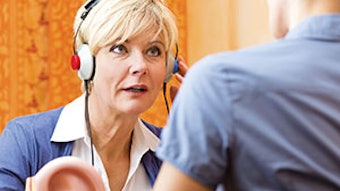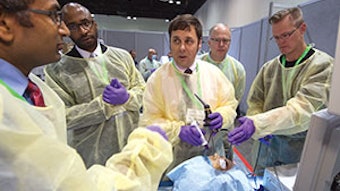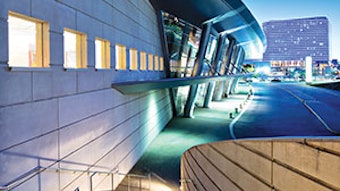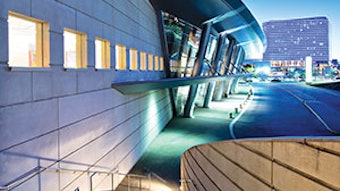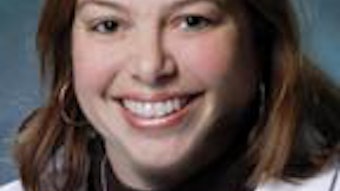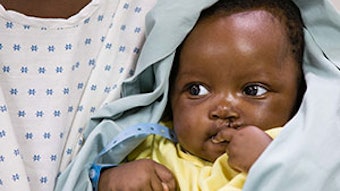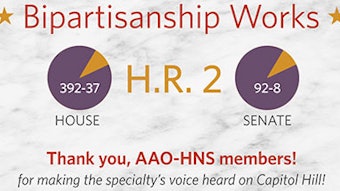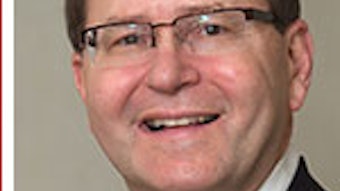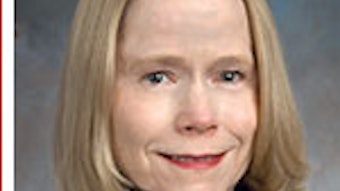More than half of all data breaches are in healthcare: Is your practice protected?
The healthcare industry suffers more data breaches than any other business segment—a total of 51 percent of all breaches. Cybercriminals target healthcare organizations because personal patient information is more valuable to exploit than credit card numbers. Ensure your practice is protected. The Doctors Company’s core medical malpractice insurance policy includes CyberGuard®, aggressive, broad coverage for claims arising from the theft, loss, or accidental transmission of confidential patient or financial information, as well as the cost of data recovery. The American Academy of Otolaryngology—Head and Neck Surgery (AAO-HNS) has partnered with The Doctors Company, an Academy Advantage Premier Partner, to provide Academy members with this exclusive insurance program since 2003. Visit http://ow.ly/G7jMY to learn more about how CyberGuard can protect your practice from data breach risks. As the nation’s largest physician-owned medical malpractice insurer—insuring over 1,000 otolaryngologists nationwide—The Doctors Company has unparalleled insight into the broad range of claims in otolaryngology. And backed by the financial strength of $4.3 billion in assets and a membership of 75,000 physicians, The Doctors Company offers AAO-HNS members a unique combination of coverage features, aggressive claims defense, and unrivaled protection. Qualified AAO-HNS members receive a program discount of 5 percent and a claims-free credit of up to 25 percent, as well as participation in the company’s multiyear dividend program. AAO-HNS members also have access to industry-leading patient safety tools and programs, including free live- and web-based CME, resources to help with the ICD-10 transition, on-site surveys, and informed consent resources at www.thedoctors.com/patientsafety. Members also receive the industry’s most aggressive defense, beginning with the promise never to settle a claim without a member’s consent, where permitted by law. This relentless defense also includes Litigation Education Retreats, which help members facing claims to master defense tactics, and educational videos showcasing actual claims experiences at www.youtube.com/doctorscompany. Created in 2007, the Tribute® Plan is an unrivaled benefit that rewards The Doctors Company’s members for their loyalty and their dedication to superior patient care with a significant financial award at retirement. How significant? The highest award to date to an otolaryngologist and AAO-HNS member was $33,554. Learn more about this groundbreaking benefit at www.thedoctors.com/tribute. Join your AAO-HNS colleagues as a member of The Doctors Company—find out how affordable the best medical malpractice coverage for otolaryngologists can be at www.thedoctors.com. What your peers are saying: testimonials from otolaryngologist members “The Doctors Company seems to always have the doctor’s best interest in mind and strives to control premium cost.” “Excellent company geared toward doctors and their best interests.” Source: The Doctors Company 2014 Member Experience Survey
The healthcare industry suffers more data breaches than any other business segment—a total of 51 percent of all breaches. Cybercriminals target healthcare organizations because personal patient information is more valuable to exploit than credit card numbers.
Ensure your practice is protected. The Doctors Company’s core medical malpractice insurance policy includes CyberGuard®, aggressive, broad coverage for claims arising from the theft, loss, or accidental transmission of confidential patient or financial information, as well as the cost of data recovery. The American Academy of Otolaryngology—Head and Neck Surgery (AAO-HNS) has partnered with The Doctors Company, an Academy Advantage Premier Partner, to provide Academy members with this exclusive insurance program since 2003. Visit http://ow.ly/G7jMY to learn more about how CyberGuard can protect your practice from data breach risks.
As the nation’s largest physician-owned medical malpractice insurer—insuring over 1,000 otolaryngologists nationwide—The Doctors Company has unparalleled insight into the broad range of claims in otolaryngology. And backed by the financial strength of $4.3 billion in assets and a membership of 75,000 physicians, The Doctors Company offers AAO-HNS members a unique combination of coverage features, aggressive claims defense, and unrivaled protection. Qualified AAO-HNS members receive a program discount of 5 percent and a claims-free credit of up to 25 percent, as well as participation in the company’s multiyear dividend program.
AAO-HNS members also have access to industry-leading patient safety tools and programs, including free live- and web-based CME, resources to help with the ICD-10 transition, on-site surveys, and informed consent resources at www.thedoctors.com/patientsafety. Members also receive the industry’s most aggressive defense, beginning with the promise never to settle a claim without a member’s consent, where permitted by law. This relentless defense also includes Litigation Education Retreats, which help members facing claims to master defense tactics, and educational videos showcasing actual claims experiences at www.youtube.com/doctorscompany.
Created in 2007, the Tribute® Plan is an unrivaled benefit that rewards The Doctors Company’s members for their loyalty and their dedication to superior patient care with a significant financial award at retirement. How significant? The highest award to date to an otolaryngologist and AAO-HNS member was $33,554. Learn more about this groundbreaking benefit at www.thedoctors.com/tribute.
Join your AAO-HNS colleagues as a member of The Doctors Company—find out how affordable the best medical malpractice coverage for otolaryngologists can be at www.thedoctors.com.
What your peers are saying: testimonials from otolaryngologist members
“The Doctors Company seems to always have the doctor’s best interest in mind and strives to control premium cost.”
“Excellent company geared toward doctors and their best interests.”
Source: The Doctors Company 2014 Member Experience Survey
